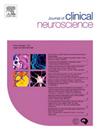Trigeminal neuralgia management in patients with multiple sclerosis: A systematic review of approaches and outcomes
IF 1.9
4区 医学
Q3 CLINICAL NEUROLOGY
引用次数: 0
Abstract
Background
Trigeminal neuralgia (TN) is a debilitating condition characterized by recurrent, intermittent episodes of severe facial pain. Approximately 1–2% of patients with multiple sclerosis (MS) experience trigeminal neuralgia during their lifetime. The management of such condition necessitates a multimodal approach that addresses both the symptoms of trigeminal neuralgia and underlying multiple sclerosis. Therefore, we aim to systematically compare the medical, surgical, and stereotactic radiosurgery (SRS) approaches and their efficacy in the management of trigeminal neuralgia in patients with multiple sclerosis.
Methods
A comprehensive database search was conducted utilizing Medline, CENTRAL, Science Direct, and Web of Science databases. Only Randomized controlled trials (RCT), retrospective, or prospective cohort studies reporting the outcomes of interest were included. The main outcomes were acute pain relief, pain relief at follow-up, and recurrence rate. Risk of bias assessment was conducted using the ROBINS-I and NOS tools for non-randomized and cohort studies, respectively.
Results
Out of the 33 studies included, 3 were assessing medical management, 17 were for surgical interventions, and 13 were for SRS, with a combined sample size of 1469 patients. Out of 193 reported patients who underwent radiofrequency ablation, 124 (64 %) patients had pain relief at the last follow-up. 76 (37.4 %) out of 203 reported patients who underwent glycerol rhizotomy (GR) had pain relief at last follow-up with either a BNI score of I-IIIB or complete pain relief with or without medication. After following up with the patients in the ballon compression cohort, 101 (60 %) out of 168 of them had pain relief after a mean duration of 27.8 months. Among the patients who underwent microvascular decompression, 71 % of them had pain relief at follow up. 280 (43 %) out of 651 patients had acute pain relief after SRS and were followed up for a mean duration of 42 months.
Conclusion
This is a comprehensive review on the current evidence of managing trigeminal neuralgia in multiple sclerosis patients. Although medical management is still the first line of management, finding the most effective drug was not approachable due to the high heterogeneity and small sample size. While glycerol rhizotomy showed a superior outcome of acute pain relief among percutaneous ablative approaches, radiofrequency ablation resulted in a better pain relief outcome at last follow up. Results from microsurgical rhizotomy and peripheral neurectomy were not conclusive enough to withdraw recommendations. Due to the lack of high-quality studies, rigorous randomized controlled trials are warranted to assess the efficacy and safety of different interventions for TN management in MS patients.
背景三叉神经痛(TN)是一种使人衰弱的疾病,其特征是反复、间歇性发作的面部剧痛。约有 1-2% 的多发性硬化症(MS)患者在一生中会经历三叉神经痛。治疗这种疾病需要采用多模式方法,同时解决三叉神经痛症状和潜在的多发性硬化问题。因此,我们旨在系统地比较内科、外科和立体定向放射外科(SRS)治疗多发性硬化患者三叉神经痛的方法及其疗效。只纳入了报告相关结果的随机对照试验(RCT)、回顾性研究或前瞻性队列研究。主要结果包括急性疼痛缓解程度、随访时疼痛缓解程度和复发率。对非随机研究和队列研究分别使用 ROBINS-I 和 NOS 工具进行了偏倚风险评估。结果在纳入的 33 项研究中,3 项研究评估了内科治疗,17 项研究评估了外科干预,13 项研究评估了 SRS,合计样本量为 1469 例患者。据报道,在 193 名接受射频消融术的患者中,有 124 名(64%)患者在最后一次随访时疼痛得到缓解。在接受甘油根切术(GR)的 203 名报告患者中,有 76 名(37.4%)患者在最后一次随访时疼痛缓解,BNI 评分为 I-IIIB 或在用药或不用药的情况下疼痛完全缓解。在对球囊压迫队列中的患者进行随访后,168 名患者中有 101 人(60%)在平均持续 27.8 个月后疼痛得到缓解。在接受微血管减压术的患者中,71%的患者在随访时疼痛有所缓解。651 名患者中有 280 人(43%)在接受 SRS 治疗后急性疼痛缓解,平均随访时间为 42 个月。尽管药物治疗仍是一线治疗方法,但由于异质性高、样本量小,因此无法找到最有效的药物。在经皮消融方法中,甘油根切术的急性疼痛缓解效果较好,而射频消融术在最后一次随访中的疼痛缓解效果更佳。显微外科根状切开术和周围神经切除术的结果并不确凿,不足以撤回建议。由于缺乏高质量的研究,因此有必要进行严格的随机对照试验,以评估不同干预措施对多发性硬化症患者 TN 管理的有效性和安全性。
本文章由计算机程序翻译,如有差异,请以英文原文为准。
求助全文
约1分钟内获得全文
求助全文
来源期刊

Journal of Clinical Neuroscience
医学-临床神经学
CiteScore
4.50
自引率
0.00%
发文量
402
审稿时长
40 days
期刊介绍:
This International journal, Journal of Clinical Neuroscience, publishes articles on clinical neurosurgery and neurology and the related neurosciences such as neuro-pathology, neuro-radiology, neuro-ophthalmology and neuro-physiology.
The journal has a broad International perspective, and emphasises the advances occurring in Asia, the Pacific Rim region, Europe and North America. The Journal acts as a focus for publication of major clinical and laboratory research, as well as publishing solicited manuscripts on specific subjects from experts, case reports and other information of interest to clinicians working in the clinical neurosciences.
 求助内容:
求助内容: 应助结果提醒方式:
应助结果提醒方式:


